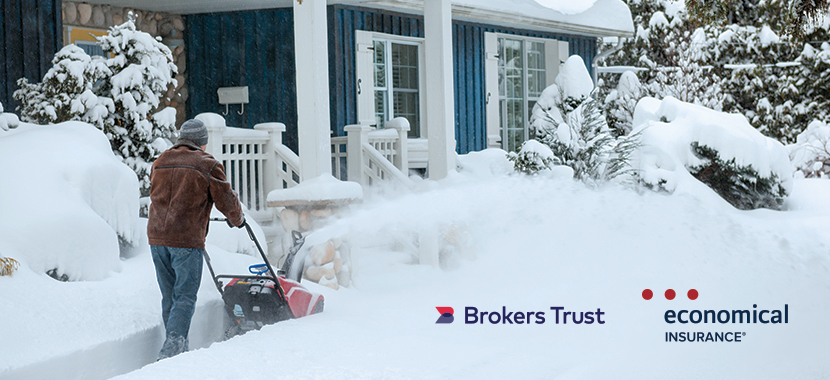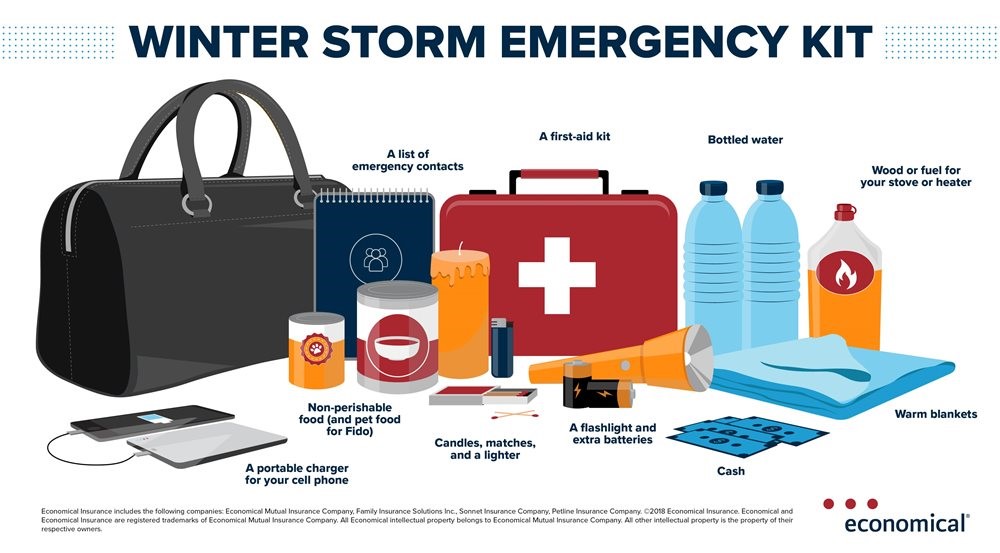
How to get your house ready for winter
Ever feel like winter has a way of sneaking up on you faster than you can say, “Fire up the snowblower”? Beat Jack Frost to the punch and keep your home and property in tip-top shape this season with these easy winter prep tips.
Indoor prep tips to keep you toasty and warm all winter
- Sound the alarms. Carbon monoxide is an odourless, colourless, tasteless, and poisonous gas that’s created when fuels like natural gas, propane, oil, wood, and coal are burned. Risks from both carbon monoxide and fire increase during the winter months when fireplaces, wood stoves, and furnaces are used more often. Take a little time each month to make sure your smoke and carbon monoxide detectors are in good working order.
- Dodge the drafts. Keep the heat in and the cold air out by caulking cracks in drafty windowpanes — and for even more protection from the harsh winter wind, consider purchasing a window insulation kit or try sealing your windows with thin plastic and waterproof tape.
- Call the local chimney sweep. Have your fireplace and chimney professionally inspected and cleaned to prevent harmful smoke and soot from backing up into your home.
- Take a breath of fresh air. Clean or replace the filters in your furnace and humidifier to keep them running efficiently. Your furnace filter should be replaced at least once every three months — but when the heat is running 24/7, it doesn’t hurt to inspect it monthly and change it before the three-month mark if it’s looking worse for wear. The humidifier pad should be changed once a year, before you first fire up your furnace.
- Prevent pipe drama. If you plan to take a trip in the winter, set your home’s thermostat to at least 13°C (about 55°F) — or higher if your home is older or isn’t insulated as well — to prevent your pipes from freezing and bursting.
- Don’t let the spring thaw sneak up on you (or sneak into your home). Take some time to inspect your basement walls and floors, and seal any cracks that could cause leaks when the snow melts.
Outdoor prep tips to protect your property from winter wear and tear
- Save your pipes. Turn off the shut-off valves for exterior faucets, disconnect your garden hoses, and let out any remaining water. If you have a lawn irrigation system, call in a professional to drain it before the pipes have a chance to freeze and burst.
- Get your mind in the gutter. Clean your eavestroughs and downspouts and repair any leaky areas to prevent flooding when the snow starts to melt. Don’t forget to point your downspouts at least six feet away from your house.
- Part with the patio. Clean and thoroughly dry your outdoor furniture, then cover it with a heavy-duty tarp or store it in your garden shed or garage.
- Put the garden to bed. Bring potted plants indoors and wrap small shrubs and trees in burlap to protect them from the elements.
- Get up on the rooftop. Inspect your roof and repair any damaged shingles that could let water in.
- Re-stock your stash. Make sure your shovels are in ship-shape before the first big snowfall (check for loose screws, cracked plastic handles, and chipped or broken blades), and be sure to stock up on salt, sand, or other alternatives to help you melt the ice or improve traction on your walkways.
- Gas up and get snowblowing. Inspect your snowblower’s blades and replace them if their edges have worn down to the wear indicator holes. If there’s any of last year’s gas left in the tank, it’s best to safely dispose of it before refilling with fresh fuel and fuel stabilizer.
Bonus points: beef up your winter storm emergency kit
If the power goes out during a storm, you’ll want to have at least three days’ worth of supplies on hand for each member of your household (including pets). You’ll also want an alternative source of heat to keep you warm when the furnace is out, such as a fireplace, a wood stove, a generator, or a kerosene heater — but make sure you know how to safely operate it before you need to use it.
Check these must-have items off your emergency kit list:

Viewing this from your smartphone? Click here to enlarge.
Winter storm emergency kit
- A portable charger for your cell phone
- Cash
- Wood or fuel for your stove or heater
- A list of emergency contacts
- A first aid kit
- Bottled water
- Candles, matches, and a lighter
- A flashlight and extra batteries
- Warm blankets
- Non-perishable food (and pet food for Fido)
Sometimes severe weather does damage to your home or property, even when you’ve taken all the right measures to protect it. If it’s been a while since you’ve reviewed your home insurance policy, it might be a good time to reach out to us and make sure you have the coverage you need to protect you all season long.
Want to help your neighbours protect their properties this winter, too? Share this article on Facebook or Twitter.
This article was originally posted on economical.com.